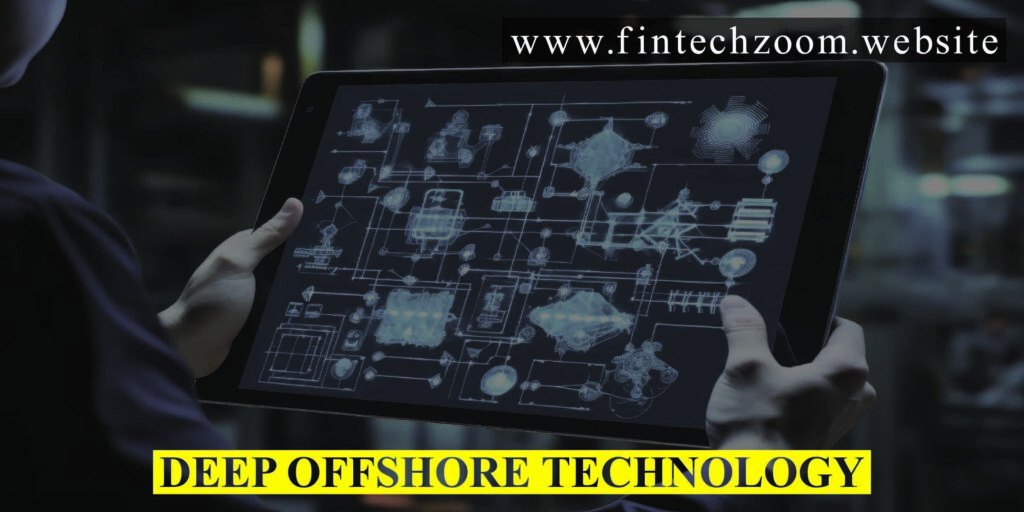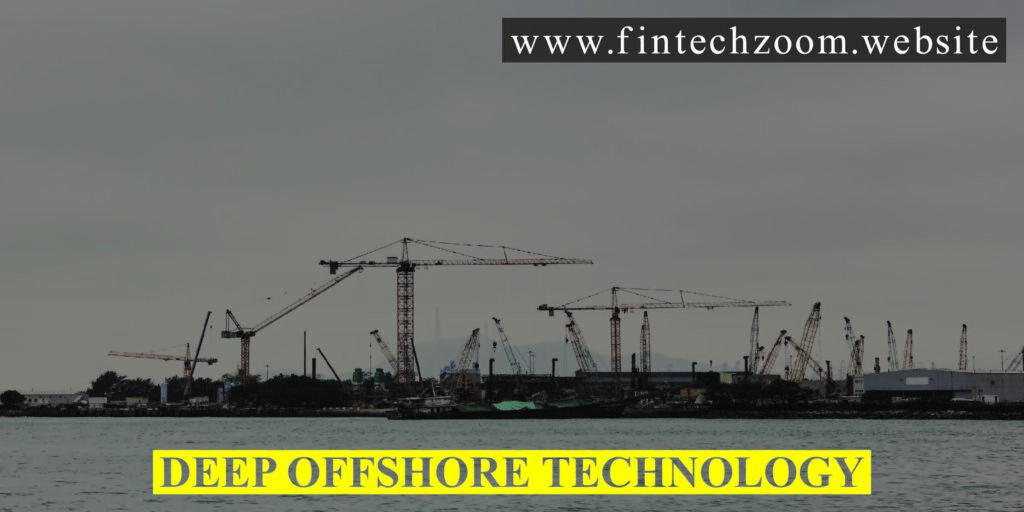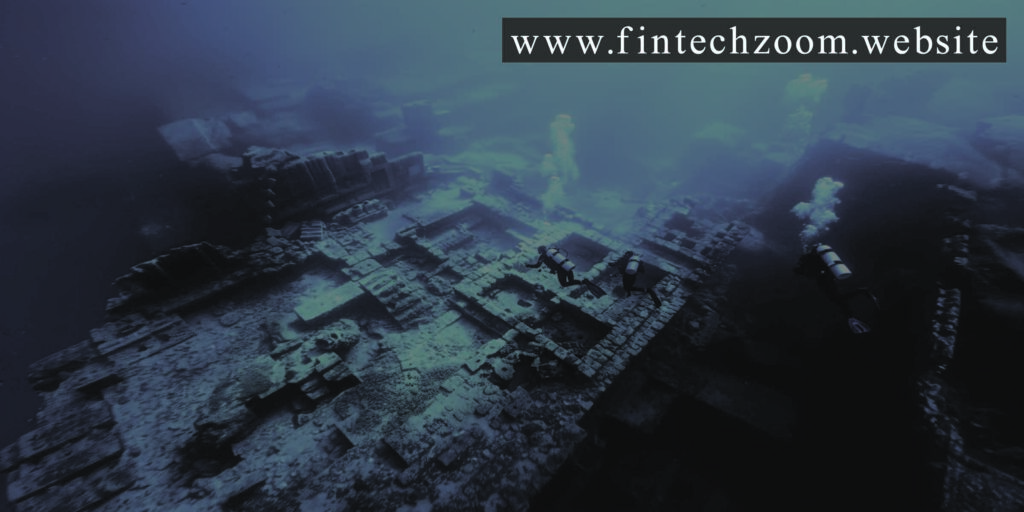Welcome, expensive reader, to the captivating global of deep offshore generation! It’s a realm where engineering brilliance and human ingenuity come together to triumph over the demanding situations of the deep sea. We’re about to dive into an ocean of innovation, discovery, and sheer wonder. So, fasten your seatbelts (or ought to we say, your existence vests?) as we embark in this exciting voyage.
Table of Contents

Setting Sail: The Beginnings of Deep Offshore Technology
The Dawn of a New Era
It all started with a easy query: How can we harness the vast sources hidden underneath the sea ground? This interest marked the beginning of deep offshore technology. Decades in the past, the concept of extracting oil and fuel from such depths regarded like a far off dream. However, as generation advanced and the demand for power grew, that dream gradually converted into truth.
Early Innovations
The preliminary steps were modest. Engineers and scientists started experimenting with rudimentary system to explore shallow waters. Gradually, these ventures paved the manner for more state-of-the-art technology, capable of withstanding the cruel underwater environment. The journey became fraught with demanding situations, but every impediment only fueled the willpower to push further.
Diving Deeper: The Evolution of Subsea Engineering
From Shallow Waters to the Deep Sea
As we advanced from shallow waters to deeper seas, the complexity of the operations multiplied manifold. Subsea engineering became the spine of deep offshore technology. Innovations on this field allowed us to dive deeper, discover further, and extract sources extra effectively.
Technological Breakthroughs
Among the many breakthroughs, the development of remotely operated automobiles (ROVs) and independent underwater cars (AUVs) stands proud. These marvels of engineering enable precise underwater inspections, renovation, and even restore paintings without requiring human divers to chance their lives.
Anchored in Ingenuity: The Role of Offshore Platforms
Building Giants of the Sea
Offshore structures are the towering giants of deep offshore technology. These structures, a few standing as tall as skyscrapers, are anchored firmly to the seabed. They serve as the operational hubs for drilling and extraction activities.
Types of Offshore Platforms
There are various kinds of offshore platforms, every designed to fulfill precise operational wishes. Fixed systems, compliant towers, and floating manufacturing systems are only some examples. Each kind boasts specific engineering features tailor-made to face up to the immense pressures and forces of the deep sea.
The Heart of Operations: Subsea Systems
An Intricate Network
Beneath the surface, an elaborate community of pipelines, valves, and manage structures work in concord. Subsea systems are the heart of deep offshore technology, permitting the seamless transfer of oil and gas from the seabed to the floor.
Advancements in Subsea Technology
Recent improvements have brought about the improvement of subsea processing systems. These structures can take care of separation and compression duties right on the seabed, enhancing efficiency and reducing the need for surface gadget. It’s a testomony to how some distance we’ve got come in getting to know the deep offshore technology.
Drilling Down: The Art and Science of Deepwater Drilling
Precision and Power
Deepwater drilling is both an artwork and a science. It requires precision, energy, and an unwavering dedication to safety. Engineers need to cautiously plan every drill, thinking about elements like stress, temperature, and geological formations.
The Role of Drillships
Drillships play a pivotal function in deepwater drilling. Equipped with today’s drilling device, these vessels can navigate to far flung locations and perform drilling operations with exceptional accuracy. They are the floating fortresses of the deep sea.
The Lifelines: Pipelines and Umbilicals
A Web of Connectivity
Pipelines and umbilicals shape the lifelines of deep offshore technology. They join offshore platforms to subsea structures, enabling the transportation of extracted assets to processing facilities onshore or at sea.
Engineering Marvels
These pipelines need to endure severe conditions, consisting of excessive pressures, corrosive environments, and sturdy ocean currents. Advances in substances technology and engineering have caused the development of strong, reliable pipelines that make sure the clean flow of resources.
Powering the Deep: Energy Solutions for Offshore Operations
The Energy Challenge
Powering offshore operations provides a unique mission. Traditional strength assets are regularly impractical or insufficient in the deep sea. Thus, innovative power answers are vital for the achievement of deep offshore technology.
Renewable Energy Integration
One exciting improvement is the combination of renewable power sources, together with offshore wind and wave electricity. These assets now not only lessen the carbon footprint of offshore operations but additionally offer a sustainable and dependable electricity supply.
Safety First: Ensuring Operational Safety in Deep Offshore Technology
The Importance of Safety
Safety is paramount in deep offshore technology. The severe conditions and far off locations make it critical to have rigorous protection protocols in place. The properly-being of personnel and the surroundings rely on it.
Cutting-Edge Safety Measures
From superior tracking systems to modern-day emergency reaction plans, the enterprise employs a number of measures to make sure operational protection. Innovations like actual-time statistics analytics and predictive preservation are recreation-changers in stopping injuries and improving protection.
Environmental Stewardship: Protecting Marine Ecosystems
A Delicate Balance
While deep offshore technology unlocks precious sources, it additionally poses dangers to marine ecosystems. Striking a stability between resource extraction and environmental safety is a center undertaking for the enterprise.
Sustainable Practices
The enterprise is more and more adopting sustainable practices to minimize its environmental effect. Techniques like subsea recycling, carbon seize and garage, and green drilling fluids are only some examples of ways deep offshore technology is evolving to guard the oceans.
The Human Element: Training and Expertise in Offshore Operations
Skilled Workforce
Behind every successful deep offshore technology operation, there is a crew of noticeably skilled specialists. Engineers, technicians, and operators go through rigorous training to address the complexities of offshore work.
Continuous Learning
Continuous getting to know and improvement are vital in this discipline. With generation constantly evolving, specialists need to live up to date with the today’s advancements and best practices. Training applications and certifications ensure that the group of workers stays capable and safe.

The Digital Revolution: Smart Technologies in Deep Offshore
Embracing Digital Transformation
The virtual revolution has swept throughout all industries, and deep offshore technology isn’t any exception. Smart technologies are remodeling how offshore operations are performed, improving efficiency and protection.
Innovations in Digital Technology
From virtual twins and IoT sensors to synthetic intelligence and device learning, digital technologies offer real-time insights and predictive abilities. These innovations enable proactive choice-making and optimize operational overall performance.
The Future of Exploration: Autonomous Underwater Vehicles
Autonomous Underwater Vehicles (AUVs)
AUVs are at the leading edge of exploration in deep offshore technology. These self-working robots can explore underwater environments with precision, amassing information and performing obligations without human intervention.
Applications of AUVs
AUVs have a huge range of programs, from mapping the seafloor and analyzing pipelines to tracking environmental conditions. Their autonomy and flexibility cause them to priceless assets within the quest to free up the mysteries of the deep sea.
Bridging the Gap: Remote Operations and Telemetry
Remote Control
Remote operations and telemetry are bridging the space among offshore web sites and onshore control centers. Advanced conversation technology permit operators to manipulate and reveal offshore operations from far off locations.
Benefits of Remote Operations
This approach enhances operational efficiency, reduces fees, and improves safety with the aid of minimizing the need for personnel to be physically present at offshore websites. It’s a extensive soar forward within the evolution of deep offshore technology.
Innovations in Drilling Techniques
Enhanced Drilling Techniques
Drilling in deep waters requires superior techniques to navigate difficult geological formations and extreme pressures. Innovations in drilling, together with controlled pressure drilling (MPD) and directional drilling, are pushing the boundaries of what’s possible.
Benefits of Advanced Drilling
These techniques beautify precision, lessen risks, and boom the performance of drilling operations. They are vital for getting access to formerly unreachable reserves and maximizing resource extraction.
Floating Production Systems: The Future of Offshore Production
Floating Production Storage and Offloading (FPSO) Units
FPSO devices are revolutionizing offshore production. These floating centers can extract, method, and store oil and gas, putting off the need for constant platforms in deep waters.
Advantages of FPSOs
FPSOs offer flexibility and mobility, allowing them to perform in faraway and deepwater places. Their potential to technique and keep resources on-website online reduces the want for massive pipeline infrastructure.
Cutting-Edge Materials: Innovations in Offshore Construction
Materials Science Breakthroughs
The harsh situations of the deep sea demand substances which are pretty sturdy and sturdy. Innovations in materials technology are leading to the improvement of superior composites and alloys that can resist extreme pressures and corrosive environments.
Applications of New Materials
These new materials are used within the construction of pipelines, structures, and subsea structures. They enhance the toughness and reliability of offshore infrastructure, making sure secure and green operations.
The Role of Big Data in Deep Offshore Technology
Harnessing Big Data
Big records is playing a transformative position in deep offshore generation. The extensive amount of facts generated with the aid of offshore operations is analyzed to benefit insights, optimize overall performance, and expect capability troubles.
Benefits of Data Analytics
Data analytics enables in identifying styles and developments, permitting proactive protection and decreasing downtime. It’s a powerful device that enhances selection-making and drives operational efficiency.
Subsea Processing: A Game Changer in Resource Extraction
Subsea Processing Systems
Subsea processing systems are revolutionizing the way we extract resources. These structures carry out separation, boosting, and compression tasks at the seabed, reducing the want for surface infrastructure.
Advantages of Subsea Processing
This technique complements efficiency, reduces charges, and minimizes the environmental footprint of offshore operations. It’s a vast advancement in the field of deep offshore generation, paving the way for greater sustainable extraction techniques.
Real-Time Monitoring: The Eyes and Ears of Offshore Operations
Advanced Monitoring Systems
Real-time monitoring systems are the eyes and ears of offshore operations. These structures provide non-stop information on numerous parameters, including pressure, temperature, and go with the flow prices.
Enhancing Operational Safety
By monitoring those parameters in real time, operators can quickly come across anomalies and take corrective movements. This complements operational protection and prevents capacity accidents, making sure smooth and efficient operations.
Future Prospects: The Next Frontier in Deep Offshore Technology
Emerging Technologies
The future of deep offshore technology is brimming with opportunities. Emerging technologies, together with subsea factories, automated drilling rigs, and renewable power integration, promise to push the limits even in addition.
A Bright Future
As we hold to innovate and explore, the ability for deep offshore technology is countless. The improvements we make these days will shape the destiny of power production, making sure a sustainable and wealthy day after today.
Also read: A Deep Dive Into Intelliscient Technologies: Embracing An Exciting Future Today

FAQs About Deep Offshore Technology
These FAQs offer a comprehensive evaluation of deep offshore technology, addressing its importance, key additives, and impact on the environment. They cowl the evolution and present day nation of offshore structures, subsea systems, and drilling techniques, highlighting improvements like self reliant underwater automobiles (AUVs) and floating production storage and offloading gadgets (FPSOs). Safety measures, environmental protection, and the integration of renewable power also are mentioned. The FAQs give an explanation for how digital generation and big statistics enhance operations, the function of skilled specialists, and destiny potentialities. This certain manual gives insights into the demanding situations and innovations using the deep offshore enterprise ahead.
What is deep offshore technology?
Deep offshore generation refers to the advanced engineering and medical methods used to discover, extract, and procedure assets from underneath the sea ground in deep water environments. This consists of the improvement and deployment of specialized gadget, platforms, and systems to perform efficaciously within the harsh situations of the deep sea.
Why is deep offshore technology essential?
Deep offshore generation is essential for having access to large reserves of oil, gasoline, and different assets that lie underneath the ocean floor. As onshore and shallow water reserves dissipate, deep offshore technology lets in us to fulfill the developing international demand for energy. Additionally, improvements on this area make a contribution to technological innovation and financial boom.
What are some key additives of deep offshore technology?
Key additives of deep offshore technology encompass:
- Offshore structures: Structures used for drilling and production operations.
- Subsea structures: Networks of pipelines, valves, and manipulate structures below the sea.
- Drillships: Vessels prepared with superior drilling gadget.
- Pipelines and umbilicals: Lifelines for transporting extracted sources.
- ROVs and AUVs: Remotely operated and autonomous underwater automobiles for exploration and upkeep.
How are offshore systems constructed?
Offshore structures are constructed the use of diverse strategies relying on their type. Fixed systems are anchored to the seabed, whilst floating platforms like FPSOs (Floating Production Storage and Offloading devices) are moored with anchors and can circulate to special locations. These structures are constructed to resist excessive oceanic conditions and help drilling, extraction, and processing operations.
What protection measures are in location for deep offshore operations?
Safety is paramount in deep offshore operations. Safety measures encompass:
- Advanced monitoring systems: Real-time facts on strain, temperature, and flow costs.
- Predictive preservation: Using information analytics to assume and deal with potential troubles.
- Emergency reaction plans: Comprehensive plans to control emergencies efficiently.
- Training programs: Continuous education for employees to deal with complex operations and emergencies.
How does deep offshore generation impact the environment?
While deep offshore technology poses risks to marine ecosystems, the industry is adopting sustainable practices to reduce its environmental effect. These consist of:
- Subsea recycling: Reusing materials to reduce waste.
- Carbon capture and garage: Capturing and storing CO2 emissions.
- Eco-friendly drilling fluids: Using environmentally secure fluids in drilling operations.
What function does digital technology play in deep offshore operations?
Digital era plays a transformative function in deep offshore operations. Innovations like digital twins, IoT sensors, artificial intelligence, and device learning offer real-time insights, optimize performance, and decorate safety. These technology enable proactive decision-making and improve operational performance.
What are autonomous underwater automobiles (AUVs) and the way are they used?
AUVs are self-operating robots designed for underwater exploration and responsibilities with out human intervention. They are used for:
- Mapping the seafloor
- Inspecting pipelines and subsea structures
- Monitoring environmental situations Their autonomy and flexibility make them invaluable in deep offshore operations.
What are the future potentialities of deep offshore technology?
The future of deep offshore technology appears promising with rising technologies consisting of subsea factories, automated drilling rigs, and the combination of renewable energy sources. These advancements will decorate performance, reduce costs, and sell sustainability in offshore operations.
How is renewable power integrated into deep offshore generation?
Renewable electricity sources like offshore wind and wave energy are being integrated into deep offshore operations to offer sustainable and reliable strength. These assets help reduce the carbon footprint of offshore activities and provide a protracted-term solution for powering far flung offshore installations.
What training is required for specialists in deep offshore technology?
Professionals in deep offshore technology undergo rigorous schooling in engineering, safety protocols, and operational strategies. Continuous mastering and development are essential to stay up to date with the today’s improvements and first-class practices. Certification applications and specialized schooling guides ensure that the team of workers stays professional and competent.
How do floating production structures (FPSOs) paintings?
FPSOs are floating centers that extract, procedure, and save oil and gas immediately at the offshore website. They are moored to the seabed and might move to one of a kind locations. FPSOs provide flexibility and mobility, reducing the want for significant pipeline infrastructure and enabling operations in far flung and deepwater places.
What advancements have been made in drilling strategies?
Advancements in drilling techniques consisting of controlled strain drilling (MPD) and directional drilling have significantly progressed the precision and performance of deepwater drilling. These techniques help navigate hard geological formations, lessen dangers, and maximize useful resource extraction.
What materials are utilized in offshore production?
Offshore production uses superior substances like composites and specialized alloys which could withstand severe pressures and corrosive environments. These materials beautify the sturdiness and reliability of offshore infrastructure, making sure safe and efficient operations.
How does big statistics have an effect on deep offshore era?
Big records performs a essential role in deep offshore technology by using reading significant amounts of information generated by offshore operations. This evaluation offers insights into operational performance, enables are expecting capacity problems, and optimizes upkeep schedules, main to better efficiency and decreased downtime.
What is subsea processing and why is it critical?
Subsea processing includes appearing separation, boosting, and compression duties on the seabed rather than at the floor. This technique reduces the want for extensive surface infrastructure, enhances efficiency, and minimizes the environmental footprint of offshore operations, making it a enormous development in deep offshore generation.
How do actual-time tracking structures work?
Real-time monitoring systems use superior sensors and verbal exchange technology to provide non-stop information on various operational parameters like strain, temperature, and float prices. These structures allow operators to fast discover anomalies and take corrective moves, enhancing operational safety and efficiency.
What are the advantages of remote operations in deep offshore era?
Remote operations allow operators to govern and reveal offshore activities from onshore control facilities. This approach reduces prices, improves protection by using minimizing the want for personnel at offshore web sites, and complements operational efficiency thru advanced communication and manage technology.
How do subsea systems feature?
Subsea structures encompass pipelines, valves, and manage systems that work collectively to move oil and gasoline from the seabed to the floor. These structures are designed to perform within the harsh underwater environment, ensuring the efficient and secure switch of extracted resources.
How is the enterprise addressing the demanding situations of deepwater drilling?
The industry addresses the challenges of deepwater drilling through continuous innovation and the improvement of superior technologies. Enhanced drilling techniques, strong protection measures, and the use of modern-day substances and system all contribute to overcoming the complexities of deepwater drilling.







2 thoughts on “Deep Offshore Technology: EXPLORING THE DEPTHS WITH WONDER AND INGENUITY”